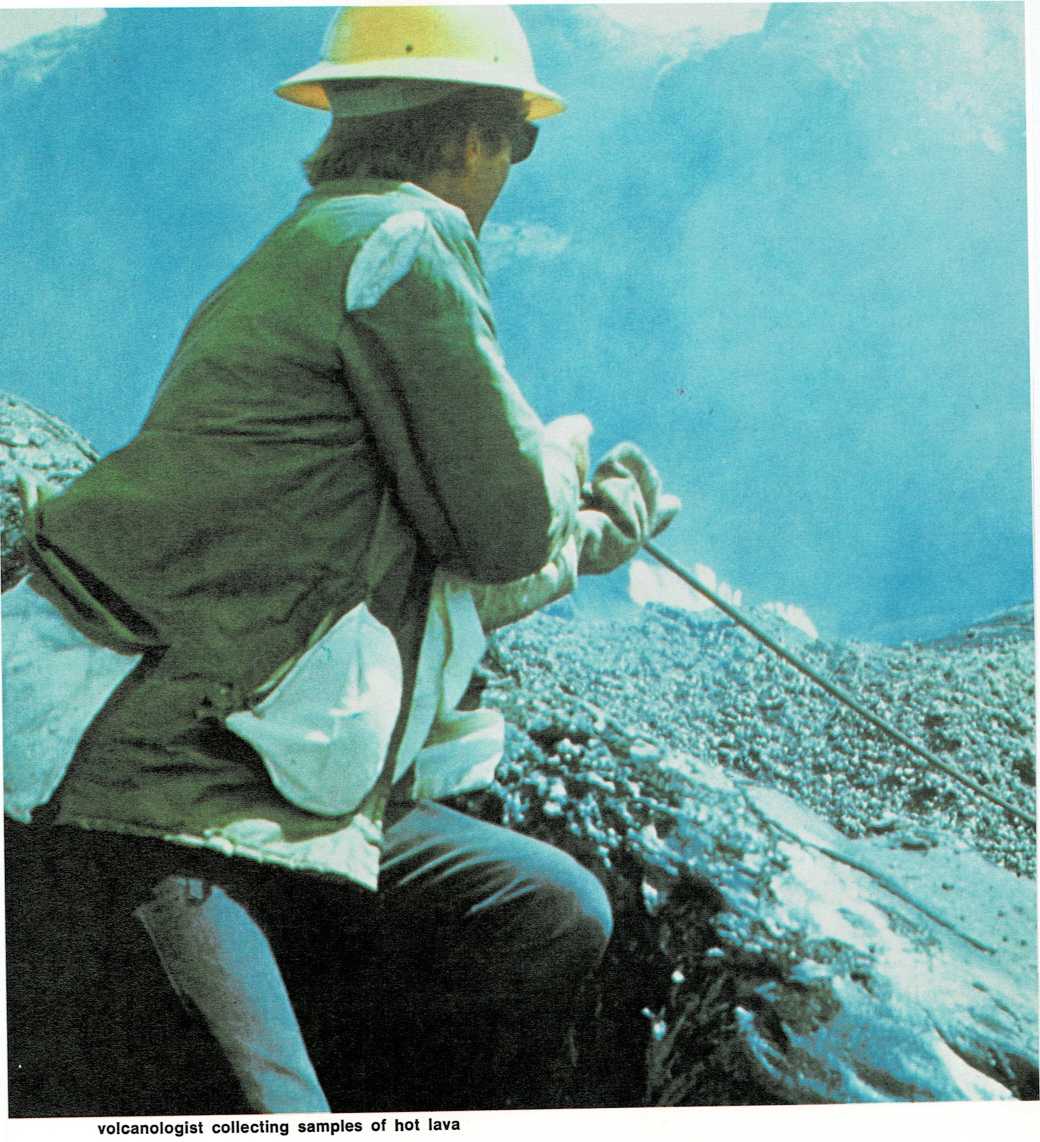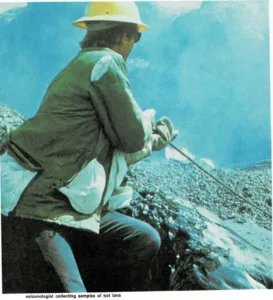

Volcano watchers
The ground shakes and quivers. Deep in the earth there is a roaring
rumble. Suddenly, there is a giant explosion! A cloud of steam, mixed
with dust and chunks of rocks, shoots out of the top of the volcano. A
river of hot, boiling lava—melted rock—pours out of cracks. The lava
flows down the sides of the volcano, burning everything in its path.
After the lava cools, scientists called volcanologists may visit the
volcano to study it. Someday, scientists hope to forecast volcanic
eruptions. So, to learn more, they climb to the top of the volcano to
collect gases. They draw the gas from the boiling bubbles inside.
Changes in the gas warn volcanologists when a volcano might erupt.
Several machines help scientists watch volcanoes, too. A tiltmeter
measures the slant of the earth’s surface. When the slant changes around
a volcano, it’s a sign that the volcano could erupt. A seismograph is
used, also, to show any warning rumbles, shakes, and quivers in the
earth. Being a volcanologist means plenty of watching and waiting.

